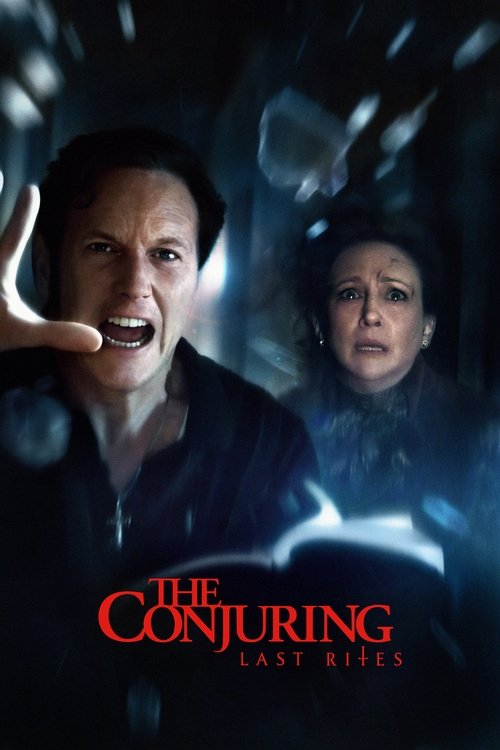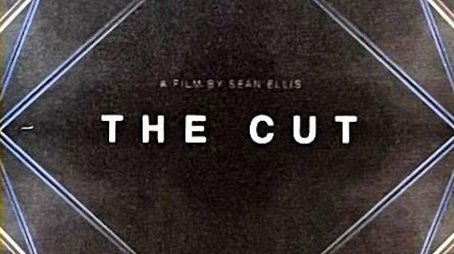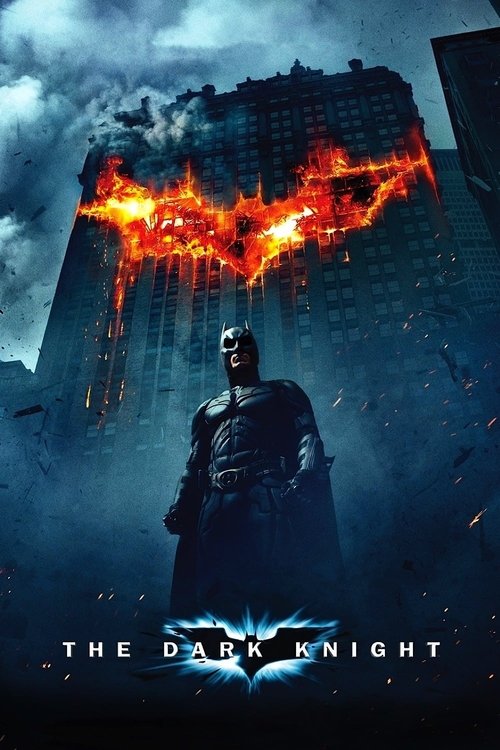
Ask Your Own Question
What is the plot?
In 1880, inventor Thomas Edison works in his New Jersey laboratory under severe financial pressure when he completes a practical incandescent light bulb. He draws up a plan to bring electric illumination to American neighborhoods using his direct current system, a technology that runs cleanly and affordably for short distances but cannot carry power far without prohibitively expensive wiring. Edison calculates that to power one hundred customers his direct current approach will require roughly 100,000 feet of copper wire, and he plots a scheme to electrify Manhattan's 1st district by placing dynamos in two buildings to serve the area.
Edison travels to Washington, D.C., to demonstrate his phonograph for the President at the White House. The meeting includes financier J. P. Morgan and Edison's private secretary, Samuel Insull. Morgan offers a business arrangement, proposing $150,000 to advance Edison's projects, but Edison refuses the partnership in the moment, citing a refusal to let his inventions be used as instruments of death. Despite that initial rejection, Morgan later supplies funds that allow Edison to push his electrification plan forward in Manhattan. On September 4, 1882, under Edison's direct current system, the New York Stock Exchange and the surrounding district light up, marking a landmark demonstration of his plan in practice.
On the railroad platform in Pittsburgh, George Westinghouse travels south after reading about Edison's work. Westinghouse and his wife wait at the station for Edison to come through, but Edison never stops; he rebuffs Westinghouse's offer of dinner and spurns a meeting. Westinghouse takes the snub as a personal slight and becomes determined to show that alternating current has advantages Edison refuses to acknowledge. He moves to champion a system that can transmit power across great distances from a single generator at a fraction of the cost, a method that promises to carry electricity thousands of miles with efficiency increases he estimates at roughly seventy-five percent over Edison's approach.
The rivalry escalates into direct technical and commercial competition. Westinghouse mounts public demonstrations of alternating current, including a successful exhibition in March 1886 at Great Barrington that wins attention and credibility for his approach. Meanwhile, Nikola Tesla arrives in the United States and joins Edison's company. Tesla brings bold new ideas about alternating current; he argues for motors and systems that will harness AC's transmission advantages. Edison laughs at and rejects those ideas in public; when Tesla confronts him about a promised payment, believing Edison has reneged on an agreement, Tesla leaves the organization and begins to look for collaborators who will take his concepts seriously.
Edison responds to the growing AC movement by doubling down on patent enforcement and litigation. He sues Westinghouse for using incandescent lamp designs that Edison claims infringe his patents, pursuing legal action that ranges from technical charges to disputes over minute design details. One contested element involves the screw fittings on bulbs, a point of contention Edison presses in court. Westinghouse's engineers counter by devising a twist-and-lock fitting that allows them to sidestep Edison's particular claims, and the two men's companies continue to jockey over manufacturing rights and standards.
As the fight over market share and legal control intensifies, Edison mounts a public relations campaign that brands alternating current as dangerous. He oversees demonstrations intended to show AC's lethality when mishandled and advances a narrative that links Westinghouse's system to public risk. Behind the scenes, Edison makes arrangements with proponents of a new execution technology. He participates in efforts that connect alternating current to the death penalty; his involvement contrasts with the stance he articulated to Morgan at the White House about refusing to have his inventions used as instruments of death.
The project to create an electrocution device moves forward in New York, and the machine designed for capital punishment takes a human life. William Kemmler becomes the first person executed in an electric chair; when the switch is thrown, the device kills him by sending a lethal current through his body. The execution becomes a shocking, widely covered spectacle. Edison gives testimony asserting that electric execution is humane, a position he offers in court and to reporters, and the public outcry begins to turn against him. Newspapers and commentators cast him in a negative light, connecting the inventor to the machine that ended Kemmler's life.
Personal tragedies intersect with the professional conflict. Mary Stilwell Edison, Edison's wife, dies, removing a private anchor from his life. George Westinghouse suffers his own loss when his friend and colleague Franklin Pope dies in an electrical accident; while working with experiments and apparatus, Pope is killed by an unexpected discharge, an instantaneous and fatal brush with the very power both men are trying to master. These deaths add emotional strain to the legal and commercial pressures pressing on both camps.
To raise revenue, Edison turns to the phonograph, marketing the device aggressively as a new commercial product. The phonograph brings income but not the vindication of technological supremacy he seeks. Meanwhile, Tesla pursues his alternating current theories elsewhere. He connects with George Westinghouse and agrees to collaborate: Westinghouse supplies capital and engineering resources while Tesla designs a practical AC motor. Together they build the machinery that can exploit long-distance transmission in a viable, scalable way. Tesla's designs form the core of what Westinghouse promotes to cities and to the world.
Financial tensions plague Tesla as they do many inventors. Investors in Tesla's own enterprises become impatient and suspicious; cash runs out, and he finds himself at odds with his backers. Under pressure, he loses control of his company and is dismissed from the business he helped found. The loss leaves him professionally isolated even as his ideas gain traction through Westinghouse's organization.
As the 1893 World's Columbian Exposition in Chicago approaches, both sides bid to supply power and lighting for the fair's vast grounds. Samuel Insull, who has served as Edison's private secretary and trusted lieutenant, represents Edison's interests in the competition. Westinghouse assembles a technical and financial proposal that promises not only illumination but a dazzling spectacle for visitors. The board in Chicago weighs bids, inspects equipment, and debates which system will best serve the fair's needs. Westinghouse's alternating current plan wins the contract; his system lights the exposition with an intensity and reach that the organizers credit for the fair's spectacular nighttime vistas. The successful demonstration at the Columbian Exposition becomes a major public victory for Westinghouse and for the AC system he has championed with Tesla's motors and designs.
Corporate maneuvering reshapes the American electrical industry. Under J. P. Morgan's influence and investment, Edison's company is folded into a larger conglomerate, and the name General Electric emerges as a consolidated corporate entity that absorbs some of Edison's operations and patents. Edison remains a public figure and a working inventor, but his direct control over the domestic electric utility business diminishes as financial forces reorganize the field.
After the exposition, Westinghouse and Tesla turn to an even larger engineering challenge: harnessing the power of Niagara Falls. They design generators and transmission systems that will convert falling water into alternating current on a scale sufficient to supply cities at a distance. Engineers erect turbines and install transmission lines that carry AC out from Niagara into urban distribution networks, demonstrating the practical payoff of long-distance alternating current and reshaping expectations about how electric power will be generated and delivered.
Public and professional fortunes diverge. Westinghouse's reputation grows as cities adopt AC and as the Niagara installation proves effective. In recognition of his technical contributions to electrical engineering, the professional community awards Westinghouse the Edison Medal in 1911, an honor that formally acknowledges his achievements alongside the name of the man he once competed with so bitterly.
Nikola Tesla, who has given crucial innovations to alternating current technology, shares in the system's triumphs but not in its financial rewards. He struggles in his later years, unable to establish lasting, secure patronage. In New York, in a modest hotel room, Tesla dies alone and impoverished, the inventor of pivotal technologies who passes away without the wealth or recognition he had sought in life.
Thomas Edison persists in invention and in fending off rivals. He considers new projects, and at one point proposes motion pictures as the subject of his next major development, a suggestion he offers when confronted with shifting public attention and with the fact that his name does not by itself guarantee technological dominance. When he eventually dies years later, the nation marks his passing in an unusual public gesture: lights across the country dim for one minute in a coordinated tribute to the man whose laboratories and inventions had so altered public life.
Across the decades, the contest between direct and alternating current reshapes industry, law, and public perception. Edison litigates, demonstrates, and testifies; Westinghouse pioneers distance transmission and builds large-scale installations; Tesla moves between employers and projects, producing critical technical breakthroughs even as he loses control of businesses that might have secured him material comfort. Mary Stilwell Edison dies during the period of conflict; Franklin Pope dies from an on-the-job electrical accident; William Kemmler dies under the new electric chair when authorities execute him by electrocution; and Nikola Tesla dies alone and impoverished in a New York hotel room. The Edison Medal presented to Westinghouse in 1911 and the dimming of lights at Edison's death form the closing public notes of a long, intertwined story in which invention, competition, legal wrangling, business consolidation, tragic accidents, and public spectacle drive each development forward until the century turns and the electrical landscape of America has been irrevocably altered.
What is the ending?
The ending of The Cut (2025) shows the boxer, after enduring a brutal and punishing weight-cutting regimen, stepping into the ring for his final fight. Despite the extreme physical and mental toll, he manages to make the weight and face his opponent. The film closes on the ambiguous outcome of the fight, focusing more on the boxer's personal journey and the sacrifices he made rather than the result itself.
Expanded narrative of the ending scene by scene:
The final act begins with the boxer, having undergone an excruciating six-day weight loss ordeal, arriving at the weigh-in in Las Vegas. He is visibly gaunt and exhausted, the result of relentless training, dehydration, and harsh methods imposed by his new trainer Boz. The weigh-in is tense; the boxer barely makes the 154-pound limit, a critical threshold for his championship shot. His girlfriend Caitlin watches anxiously, her concern for his health evident, but she remains supportive despite the strain on their relationship.
Next, the boxer retreats to his hotel room, physically drained and mentally fragile. He reflects on his past failures and the demons that drove him back into the ring. The film shows close-ups of his face, sweat and pain etched deeply, highlighting the psychological torment alongside the physical suffering.
On fight night, the boxer enters the arena, the crowd roaring. The camera lingers on his hollow eyes and trembling hands, underscoring the cost of his obsession. The fight itself is depicted with raw intensity but is not the central focus; rather, the film emphasizes the boxer's internal struggle as he battles not just his opponent but his own limits.
As the rounds progress, the boxer shows flashes of his former skill and determination but is clearly weakened. The film does not explicitly reveal the fight's outcome; instead, it cuts between the boxer's battered face, Caitlin's anxious expression, and Boz's cold, impassive demeanor.
In the closing moments, the boxer stands in the ring, breathing heavily, bloodied but unbowed. The final shot lingers on his face, a mixture of pain, relief, and ambiguous resolve. Caitlin approaches him, and they share a brief, wordless moment that conveys both love and the cost of his quest.
The fate of the main characters at the end:
-
The boxer survives the fight but is left physically and emotionally scarred, his future uncertain but marked by the personal demons he confronted.
-
Caitlin remains by his side, her support unwavering though strained by the ordeal.
-
Boz, the ruthless trainer, departs with little emotional connection, having achieved his goal of pushing the boxer to the limit.
The ending underscores the film's themes of sacrifice, obsession, and the harsh realities behind the pursuit of glory in professional boxing. It leaves the viewer with a powerful image of a man who has paid a steep price for one last shot at redemption.
Is there a post-credit scene?
There is no available information indicating that the movie titled The Cut produced in 2025 has a post-credit scene. The search results do not mention this film or any post-credit content related to it. The results mainly discuss post-credit scenes for other 2025 movies like Superman and How to Train Your Dragon, but nothing about The Cut specifically. Therefore, based on current data, it appears The Cut does not have a post-credit scene or it has not been publicly documented.
What specific challenges does The Boxer face in losing weight for the fight?
The Boxer must lose 30 to 32 pounds in just six days to qualify for the fight, dropping from around 186 pounds to the 154-pound limit. This extreme weight cut involves relentless training, minimal food intake, sauna sessions, and even illegal methods pushed by the harsh trainer Boz, which takes a severe physical and psychological toll on him.
How does the relationship between The Boxer and his wife Caitlin influence the story?
Caitlin, who is also The Boxer's trainer and wife, cares deeply for him and is reluctant to push him to dangerous extremes in his weight loss regimen. Their quiet, intimate scenes reveal a shared history of trauma and struggle, showing emotional depth and mutual attempts to understand and accept each other's vulnerabilities amid the grueling preparation for the fight.
What role does the character Boz play in The Boxer's preparation?
Boz is a brash, unorthodox trainer brought in to help The Boxer lose weight rapidly. Unlike Caitlin, Boz is indifferent to The Boxer's well-being and uses any means necessary--including illegal drugs and extreme dehydration techniques--to achieve the desired weight, pushing The Boxer to the brink physically and mentally.
What internal conflicts does The Boxer experience throughout the film?
The Boxer struggles with repressed trauma from a troubled childhood and a lingering obsession with proving himself in the ring. His hunger is both literal, due to the extreme dieting, and figurative, reflecting his deep desire for redemption and to overcome his past failures, which drives him into a psychologically intense and disturbing journey.
How is the setting of Las Vegas significant to the plot?
Las Vegas serves as the backdrop for The Boxer's comeback fight and symbolizes the high-stakes, ruthless environment of professional boxing. The city's atmosphere amplifies the pressure and desperation of The Boxer's situation, as he races against time to meet the weight requirements and reclaim his status in a world that is both glamorous and unforgiving.
Is this family friendly?
The movie "The Cut" (2025) is not family friendly and is rated R for language throughout, drug abuse, some strong violent content, and brief sexual content. It contains intense and disturbing scenes including graphic body horror elements that go beyond typical sports violence, making it potentially upsetting for children or sensitive viewers. The film also deals with themes of eating disorders and psychological distress, portrayed in a way that some critics found clumsy or unsettling.
Potentially objectionable or upsetting aspects include:
- Strong language throughout the film.
- Drug abuse depiction.
- Strong violent content, including boxing violence and more graphic, grotesque body horror imagery that is more intense than usual sports movie violence.
- Brief sexual content.
- Themes involving mental and physical deterioration, which may be disturbing.
- Emotional intensity and psychological struggles that may be heavy for sensitive viewers.
Overall, the film is a dark, intense psychological thriller with graphic and mature content, making it unsuitable for children and potentially distressing for sensitive audiences.











